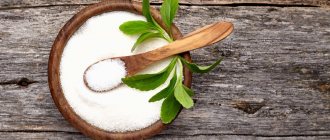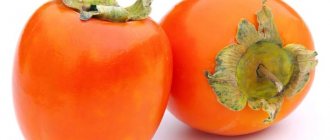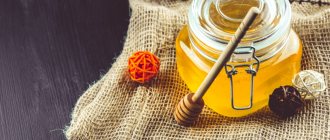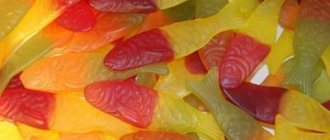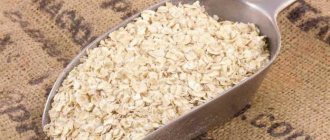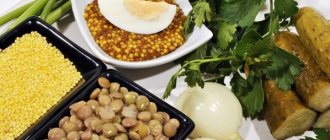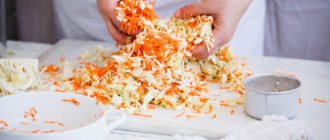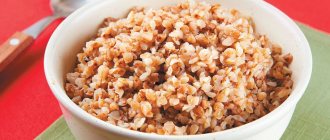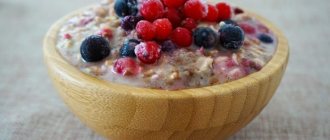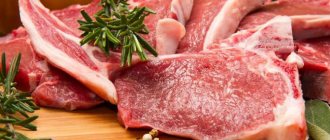Candidate of Chemical Sciences A. S. Sadovsky “Chemistry and Life” No. 4, 2005
- Stevia glucosides and our taste
If you want to understand something, find out how it came to be. B. F. Porshnev
Stevia is interesting not only because it synthesizes very sweet glycosides. The intrigue is that in some countries this plant serves as one of the sugar substitutes, and at the same time the FDA (Food & Drug Administration) - the main US agency that controls the safety of food and drugs - stubbornly classifies it as “products of uncertain safety.” " What's the matter?
Asymmetrical stories
The Europeans' passion for sweets marked the beginning of the process of globalization: because of sugar, the New World turned into a red, black and white continent. Disregarding basic compassion, thousands of African slaves were driven here to the cane plantations. Only after the Napoleonic wars, with the advent of sugar beets, sugar ceased to be a purely colonial product.
The Spaniards, who conquered Central and South America, were not at all interested in the culture of the Indians they destroyed, much less the question of how they managed without the same sugar. This became clear only at the very beginning of the last century thanks to Moises Santiago Bertoni. As the director of an agronomic college in the capital of Paraguay, Asunción, he became interested in stories about an unusual plant with a sweet taste. Having obtained a bunch of twigs, Bertoni set to work, but was able to finally identify and describe the species only 12 years later, having received a living specimen as a gift from a priest in 1903. It turned out that this is a new representative of the stevia genus; the discoverer named it after his chemist friend Dr. Ovid Rebaudi, who helped make the extract, so the result was Stevia rebaudiana
(Bertoni) Bertoni.
The genus Stevia includes up to 280 species and is included in the tribe Eupatorium
of the Asteraceae family (in Russian they are called poskonniki).
In the Russian advertisement “Stevia is the best thing created by nature,”
someone also came up with a legend about a beautiful Indian woman named Stevia, whom the gods turned into a sweet bush. I prefer another version: this genus of Asteraceae is named in memory of the Russian botanist H. H. Steven (1781–1863). A Swede by birth, he founded the Nikitsky Botanical Garden and was the main winegrower of the Russian Empire, and in the West he is known for his works and herbarium of plants of the Caucasus and Crimea.
The main substances that made S. rebaudiana
(hereinafter simply stevia) famous, only it contains: stevioside and rebaudiosides. These are diterpenoid glucosides (that is, only glucose residues and not other monosaccharides are attached to the aglycones of these glycosides). Their sweetness is 200–400 times stronger than that of sucrose. Stevioside was isolated in 1931 by French chemists M. Bridel and R. Lavey; its content ranges from 4% to 20% of the dry weight of the plant; rebaudiosides and other analogues are half that amount. The natural range of the sweet herb stevia is narrow - mainly the valley of a high-altitude tributary of the Parana River on the border of Paraguay and Brazil, so it was initially thought that it was as rare as ginseng.
If you were given a gift or you somehow made bells and whistles for mate in a glassblowing workshop, everyone is in favor of drinking it not with sugar, but with stevia, which can be diluted on the windowsill or in the garden
Now they write that one and a half thousand years ago, that is, long before Columbus, the Indians knew stevia well, they drank their favorite mate (Paraguayan tea) with it, and they were treated with it for many ailments. The Spaniards reported this home back in the 16th century. If you want to try mate, it's not difficult at all. By purchasing a gift set at a tea store, you will receive instructions, a pack of mate and accessories: a calabash - a vessel made of dried pumpkin and a bombiyu (literally "straw") - a tube with a mouthpiece at one end and a filter at the other. Paraguayan tea is crushed branches of the Ilex paraguariensis
, it is evergreen, deciduous and belongs to the holly family. (Of all the members of this family, only the Mahonia berry bush can withstand the climate near Moscow.)
Having brewed the mate according to the instructions, you will get a porridge, and this is where you will need the bombiya, which you need to carefully lower to the bottom of the calabash and suck out a few sips. If you wish, with friends or household members you can, by throwing a calabash in a circle, reproduce the ritual of the Paraguayan Guarani Indians. It is also not difficult to find information about the history of the cultivation of mate by Spanish monks - in the 17th century it was called the “Jesuit elixir” - about the intricacies of mate drinking rituals and about different brewing methods. Now imagine that you want to taste the most authentic Paraguayan tea. Do you need stevia for this, as the legends about the Indians tell? It would take too long to list the information that can be found on sites like club-mate.ru or mate.ru, but I assure you that there is no answer to this question; you will not see the word “stevia” at all. Something clearly doesn’t add up in the history of Paraguayan culture.
Composition of Stevia Breeze tea for weight loss
In Chinese teas, we are not primarily interested in stevia. Perhaps every person who has been in the dietary community for a long time has heard about the magical cleansing of the body. Most of the products called tea from China are not quite tea, but rather an analogue of good old castor oil. Do you remember in which direction the Flying Swallow was flying? The breeze is blowing in the same direction.
The tea contains cassia tora, or good old senna. Weed has a very clear effect. And this is not a decrease in sugar levels, as you might have already guessed. Senna is a laxative that allows you to spend long hours of leisure in a certain room. Unlike mild fiber-based laxatives, it causes contraction of the smooth muscles of the intestines, and an inevitable, “hurricane” effect. If you take senna preparations for a long time, you can become constipated. Moreover, it doesn’t matter at all what your diet will be. Sooner or later, excessive stimulation of the intestines will make itself felt, and it will simply stop doing its job without senna.
Crowds of suffering consumers of such teas have long been attacking gastroenterologists and proctologists. Irritable intestines, completely “washed away” microflora and chronic inflammation are just a small part of the list of consequences of living on a laxative. In addition, drinking such drinks causes dehydration and disrupts metabolism.
Strictly speaking, it would be appropriate to name the seagulls “Senna Breeze”, since weight loss is achieved mainly due to constant diarrhea. Against this background, promises about minus 6 kg per month do not look so unrealistic.
Stevia looks very, very innocent. This component is really useful. The herb stevia is 200 times sweeter than sugar, and is used to produce stevioside, a natural sweetener containing a minimum of calories.
The product is known for its ability to balance blood sugar levels and is therefore often recommended for diabetics. It actually works quite well. Stevia also causes a moderate diuretic effect and helps improve blood circulation and blood composition.
According to the laws of a managed market
The situation with the food use of stevia is largely determined by the position of officials from the American FDA service. According to the internal rule, a food or medical product can be passed through the FDA in two ways: through examination or as a traditionally used product without any complications before 1958 (the latter are designated by the English abbreviation GRAS). The FDA has found that there is no comprehensive knowledge of traditional uses for stevia, and experts always have data that questions its safety. So stevia is on the list of unsafe food additives. This means that if it is indicated on the label or its glucosides are found in a food product, then the product, as well as labels, advertising and accompanying literature, are subject to seizure in the United States with all the ensuing consequences. There were such cases, although not many. In the state of Texas, along with stevia, police marshals destroyed 2,500 copies of cookbooks (how can we forget about freedom of speech).
Talk about a “civil” war against excessive sugar consumption has been going on in the United States for a long time. The once coveted product of the New World turned into an evil, leading to obesity and diabetes, here before elsewhere. Now, after the victory over tobacco smoking, we can expect that equally severe measures will be applied to sugar. It’s clear: replacing sugar with low-calorie sweeteners and reducing its production involves a lot of money. Passions are running high. The North American public accuses the FDA of unreasonably promoting aspartame, the bias of its experts, the collusion of the FDA, Monsanto and Coca-Cola, and all other sins. The fight against bureaucracy is the lot of novice politicians; entrepreneurs prefer to give bribes or look for workarounds. Such a way has been found for stevia. Since 1995, it has been officially available in the United States as a dietary supplement. Dietary food products and biologically active additives (BAA) are a special area; in many countries it is not located between food and medicine, but somewhere completely to the side.
The USA is an aspartame empire, and it has to be taken into account. Matelyubs do not risk producing ready-made mixtures of mate and stevia: if the product accidentally gets into the United States, it will be confiscated. As I. Ilf and E. Petrov rightly noted in “One-Storey America,” when “prosperity” is prohibited, there is no point in “publicity.” With stevia, everything is exactly the opposite. To be pushed through the FDA, it would have to be closely linked to the traditional yerba mate product, already recognized by GRAS. True, the historical facts for “sweet grass” are much poorer than for mate; they were supplemented with streamlined wording and legends that contain obvious inaccuracies.
Stevia is a narrow endemic; 100 years ago it was not widespread in Paraguay. Even Bertoni, with his professional connections, did not immediately find her. It is known that Francisco Hernandez, the physician of the Spanish King Philip II, wrote about the “sweet grass” of the Indians, but these were not the Guarani, but the Aztecs, and the grass was not “ Caa-hee
"(stevia), and "
Tzonpelic xihuitl
" (sweet lippie -
Lippia dulcis
Trev.). Lippia contains the sesquiterpene hernandulcine (the name, as you might guess, is in honor of the physician). Gernandulcin is even sweeter than stevioside (in a molar ratio to sucrose - 1000 times), it was patented as a sweetener, but did not receive practical use: low solubility in water and heat resistance, and the taste is not “pure”. However, it serves in taste receptor research as a chemical model for sweetness.
What is stevia
Stevia is a genus of perennial plants in the Asteraceae family, which includes approximately 260 species of shrubs and herbs native to Central and South America, as far north as Mexico.
The plant reaches a height of 1.2 m, the thickness of the stem is up to 1.5 cm. In the wild, it can be found in semi-arid areas from plains to mountainous regions. During flowering, the grass is covered with many small white or pinkish inflorescences.
Stevia produces seeds, of which only a small part grows. When cultivating, the most effective method is the vegetative propagation method.
Of all the species, only one, stevia honey, is processed and grown on an industrial scale. Only leaves that are collected immediately before flowering are used for processing, since at this time the concentration of sweet substances is maximum.
Chemical composition
Stevia leaves contain:
- flavonoids - have antispasmodic, anti-inflammatory, choleretic effects;
- cardiac glycosides - have a cardiotonic effect;
- hydroxycinnamic acids - have antimicrobial and anti-inflammatory effects;
- amino acids - have antibacterial and anti-inflammatory effects, improve metabolic processes, take part in the production of hemoglobin;
- zinc - strengthens the immune system, heals abrasions and cuts, is used to prevent eye diseases, stimulates brain activity;
- potassium - has a positive effect on intestinal motility, is important for normal protein synthesis, and is the main component that interacts with sodium;
- magnesium - has a positive effect on bone growth, reduces blood pressure, normalizes sugar levels in the circulatory system, stabilizes the condition of PMS;
- iodine - regulates energy balance and body temperature, burns fat deposits during a diet, stimulates mental activity, and is good for healthy teeth, hair, skin and nails;
- selenium - has an antioxidant effect, strengthens the immune system, improves fertility;
- B vitamins - improve the functioning of the nervous and cardiovascular systems, take part in cell growth and muscle activity, increase the body’s protective properties;
- vitamin A - has a positive effect on vision, is necessary for the synthesis of visual pigment in the retina, protects against colds;
- vitamin C - has regenerating properties, has a powerful antioxidant effect, helps strengthen the body;
- vitamin D - slows down the aging process, fights cancer;
- vitamin E - has an antioxidant effect, normalizes the activity of the male and female reproductive system, improves the functioning of the endocrine, cardiovascular and nervous systems;
- vitamin K is a fat-soluble vitamin responsible for the blood clotting mechanism;
- Vitamin P - improves the quality of vascular function and normalizes blood pressure.
Where can I buy
You can purchase stevia at a pharmacy or specialized online stores. It is produced in the form of raw materials for making tea, tablets, herbal tea for weight loss “Breeze tea”, syrup.
Prices:
- Herbal tea stevia-breeze (Chinese herbal) 80 g - 120 rubles;
- Stevia tea, filter bags, Breeze, 20 pieces in a pack - 120 rubles;
- Crimean stevia syrup “Elixir for weight loss” 50 ml - 250 rubles;
- Stevia tea for weight loss 40 g - 110 rub.
Who shouldn't you trust?
The organizing and disciplining force of any civilized society is bureaucracy. Therefore, in the USA, if your health is contraindicated or your beliefs do not allow you to drink some kind of “cola” with aspartame and saccharin (with sugar too), you will have to buy a bottle of extract or a pack of stevia leaves, fruits in different departments, come home and brew the drink yourself . It is difficult to explain why this cannot be immediately mixed, like aspartame, in one bottle, so the discussion with the FDA on this topic is not published and is conducted, so to speak, on a routine basis. However, a good joke was made by an unknown named FDA official: “If we wanted, we could ban carrots too.” A good hundred studies have been carried out on the toxicity of stevia and its individual components, so you can select suitable ones and draw the necessary conclusions for different cases. However, last spring the first international conference on the safety of stevia was held in Belgium, which was organized by the European Stevia Research Center located there. As follows from her works, it’s all a matter of doses.
Stevia is suspected of three crimes: antiandrogenicity, mutagenicity and, as a consequence, carcinogenicity. The work of researchers, equipped with the most advanced equipment that allows them to find picograms of stevia glucosides in samples, helped to construct the following diagram of the biochemistry of stevia in the body of rats, mice, chickens and people. As it turned out, its glucosides, once in the body of a mammal, do not turn into anything - there are no corresponding enzymes in the intestinal tract, and those hundredths of a percent that seeped inside, unchanged, leave the body along with the urine. In any case, with an accuracy of picograms, no products of stevioside transformations could be found either in the blood or in the urine. The only exception is steviol, that is, that fragment of the stevioside molecule that remains after the elimination of glucose. However, this cleavage occurs before steviol passes through the intestinal wall: it is carried out by our cohabitants - bacteria of the intestinal tract, which utilize small amounts of stevia glucosides. And it was this steviol that became the main suspect. The accusations are as follows: firstly, it is capable of causing mutations in some E. coli, and secondly, it deprives experimental rats of the opportunity to have offspring.
Suspicions of the latter were caused both by the structure of steviol, which is similar to steroid hormones, and by legends that Paraguayan women use stevia as a contraceptive. The first data on the antiandrogenic abilities of steviol appeared in the experiments of Dorfman and Nes, carried out in 1960 on chickens - their crest growth is convenient for monitoring the decrease in the activity of male sex hormones. (There is a special “capon unit” of hormonal activity.) At a dose of 1.2 g/kg (for a person, this dose in terms of sweetness corresponds to a bag of sugar per day), a decrease in activity was actually recorded. Eight years later, G. Planas and J. Kuch prepared an infusion from dried stevia powder (5 g/100 ml, that is, approximately 100 teaspoons per glass) and, apart from it, did not give female mice anything to drink. The result was 0.5 g of stevioside per kg of animal weight. Neither the weight nor the health of the mice was affected, but their fertility was reduced by almost half, which the authors told the whole world about with the help of Science magazine. However, already in 1975, H. Akashi and Y. Yokoyama did not notice any effects at a dose of 0.1 g/kg, and in 1996, S. Shiotsu tried to reproduce Kucha’s experiments with the greatest accuracy on a larger number of mice and also did not find the effect of stevia on their fertility. The corresponding article was published in Tech. J. Food Chem. Chemicals". In 1999, M. Melis fed male mice with stevia infusion for two months, and the weight of fresh plant leaves they consumed daily exceeded half the weight of the animals themselves. In other words, the dose of stevioside was 5.3 g/kg. These males have problems with reproduction. But reducing the dose five times, to an equally monstrous 1 g/kg in the experiments carried out by J. Geuns in 2004, eliminated these problems.
Numerous experiments carried out with both stevioside and rebaudioside have shown that they not only do not cause cancer, but, on the contrary, reduce the likelihood of experimental animals getting adenoma or breast cancer and reduce the rate of development of skin cancer. As for mutagenicity, steviol was noticed in it: under its influence, cells of one of the salmonella strains mutate. However, only these cells - many other strains of both salmonella and E. coli do not respond to it. Even huge doses of pure steviol - 4 g/kg - did not cause any signs of mutations in the tissues of the mice. And even with that single strain, the activity of steviol was not so high: three thousand times less than, say, benzopyrene. And the latter, by the way, is necessarily present in the smoke of a burnt tree, and, therefore, anyone who has been on a picnic and tasted meat roasted on coals at the fire has inevitably dealt with it. Also, mutagenic activity was noticed in steviol derivatives, for example, in its methyl ester, but, as already mentioned, no derivatives were found in the blood of volunteers.
In general, the lethal dose (LD50) of stevioside is 15 g of stevioside per 1 kg of live weight. This level could probably be achieved by feeding mice only stevia, because for humans this LD50 sweetness value corresponds to 300 kg (twelve bags) of sugar per day. Rebaudi, in his experiments on animals, which convinced him of the harmlessness of stevia, did not use such large doses. Obviously, the normal dose - two or three leaves per cup of tea - is as far from harmful in its harmfulness from the doses used in the experiments as a pinch of table salt is from a pound of it. Moreover, during a thorough examination of the blood of volunteers who tasted stevia extract, the metabolic products of steviol were not found as well as stevioside derivatives, and all of it, intact, was excreted in the urine in the form of a monoglucoside. And the highest content of this monoglucoside in the blood was 100 ng per mg of plasma.
Biochemists did not pay attention to the taste sensations of experimental animals, but in vain. As V. Dzhakinovich established in 1993 for gerbils chosen as a model rodent, the series of sweets looks like this: rebaudioside A = stevioside > hernandulcin > sucrose. Moreover, sugar itself serves as an effective taste stimulant for them. That is, the bags of sugar mentioned above per experimental mouse were indeed bags of sweetness, which could well cause a sweet shock.
Honey grass against extra pounds
weight loss results before/after using stevia
The path to losing weight begins with revising your own diet. Sucrose is a simple carbohydrate obtained from refined sugar and is absorbed by the body instantly. Moreover, with various drinks, cakes and desserts, we consume much more of it than the required amount. And the body immediately “stores” unclaimed reserves in fat deposits.
Consequently, sugar is one of the first to be included in the list of products that are subject to complete exclusion for those who want to lose weight. However, such a refusal entails inevitable psychological trauma: after all, sweets are always associated with pleasure!
The herb stevia will help you make a comfortable and stress-free transition to proper nutrition. For weight loss this is an ideal option. She:
- does not contain such unwanted calories;
- not only does not increase blood glucose levels, but is also able to reduce it (a valuable quality for diabetics);
- dulls the feeling of hunger (which means overeating is excluded).
But this is not all that this unique natural pantry has. Stevia contains a whole pharmacy: in addition to diterpene glycosides (sweet components of the herb), it contains a lot of useful vitamins, amino acids, and microelements necessary for the body.
Without normalizing metabolic processes, it is difficult to expect positive results in eliminating accumulated fat reserves. And here stevia also comes to the rescue. The components contained in it restore cell sensitivity to insulin and activate the production of the enzyme lipoprotein lipase, the main breakdown of fats.
Thus, even simple tea with stevia for weight loss will be a good help .
You should also not discount the hypotensive, prebiotic, vascular-strengthening, immunomodulatory, anti-inflammatory effects of stevia.
And one more pleasant bonus: with stevia you can forget about caries . The substances contained in it prevent the growth of bacteria and protect the oral cavity from the encroachment of microbes.
Stevia - queen of the fields
Bertoni's discovery did not go unnoticed. Stevia began to be cultivated, and already in 1908 they received the first harvest - 1 ton of dry leaves. Fortunately, the plant turned out to be very flexible. Like Indian corn, it can be grown almost all the way to the Arctic Circle. Stevia does not reproduce well from seeds. While on expeditions in 1930–36, N.I. Vavilov sent seeds from South America to his VIR in Leningrad, but they could not germinate them. As stevia was propagated vegetatively and forests were cut down for timber, wild stevia became even less common. Stevia is an evergreen shrub, but far from the tropics it is grown as an annual plant, preparing seedlings every year, and as a perennial it can be grown on a windowsill.
They started growing stevia in different countries, but they became especially interested in the new product in Japan and China. In Japan, it was considered that cyclamate and sucralose (for an article on sweeteners, see Chemistry and Life, No. 12, 1997), on the contrary, were more dangerous to health, and their use was banned. The Ministry of Agriculture, Forests and Fisheries supported a program to introduce stevia from Paraguay in the 1960s. The Japanese called it the "green revolution". Neighboring countries also joined the revolution. Already in 1982, 1000 tons of stevia were consumed in Japan for food purposes, of which 300 tons were its own, and imported from mainland China - 450, from Taiwan - 150, from Thailand - 100, from South Korea, Brazil and Malaysia - 50 t. Now stevia is present in almost half of Japanese food products. South America also grows a lot of stevia. On average, a Paraguayan consumes 8 kg of stevia per capita per year. According to some experts, for Paraguayan women this will be a contraceptive dose. With a sweetness level of 300, the life of Paraguayans turns out to be sickly sweet: overcoming almost 800 g of sugar a day is no joke. For example, the average Belgian eats just 135g of real sugar every day.
We started working on stevia by decision of the USSR Council of Ministers in the 1980s - then a large program of its acclimatization was financed with the parent enterprise of the All-Russian Research Institute of Sugar Beet in Kyiv. In Ukraine, stevia has taken root; here, per 1 hectare with high profitability, you can get ten times more sweetness than from sugar beets. Our own varieties have already been registered: “Bereginya” and “Slavutich”. In Russia, after the collapse of the USSR, the Voronezh Research Institute of Sugar and Beetroot took over the baton; there is also a Russian variety for the northern regions - “Ramonskaya Slastena”, as well as domestically produced extracts. You can probably look for them among dietary supplements or therapeutic and preventive nutrition - in supermarkets or pharmacies, on the sweetener shelf there are saccharin, cyclamate or the same aspartame.
Steviophiles (let's call them that) proclaimed the beginning of the century the century of stevia. Canada, Australia and New Zealand have already included it in the diet. And finally, in mid-2004, WHO experts also temporarily approved stevia as a food additive with a permissible daily intake of glucosides of up to 2 mg/kg. In terms of sugar, this is far from a bag - for the average person 40 g per day. In Ukraine the norm is higher, just 100 g (5 mg/kg). This is a good start, because from all the scientific data it follows that stevia is the best sugar substitute today. It is less toxic than synthetic sweeteners ,
It is well tolerated without side effects, has good taste, and is affordable. All this is especially important for patients with diabetes and obesity. Stevia is also interesting for those who are trying to get closer in composition to the diet of their distant ancestors - hunter-gatherers, while at the same time not giving up sweets.
History of appearance
The first laboratory studies of the plant began in the sixteenth century by the Spanish botanist and physician P. Stevus. He gave it a name and discovered the benefits of stevia when consumed. This is how she became known in Europe.
At the same time, some American Indian tribes consumed the honey herb stevia, and they named it after the bee delicacy for its characteristic flavor. And already in the mid-twentieth century, scientists from France isolated glycosides from the plant, which gave it a sweet taste. Since the end of the same century, Japan began to grow stevia and use it for food production.
Various properties of the sweetener stevia have been discovered. You should learn about the benefits and harms of a product before using it or choosing tea or syrup from this plant.
